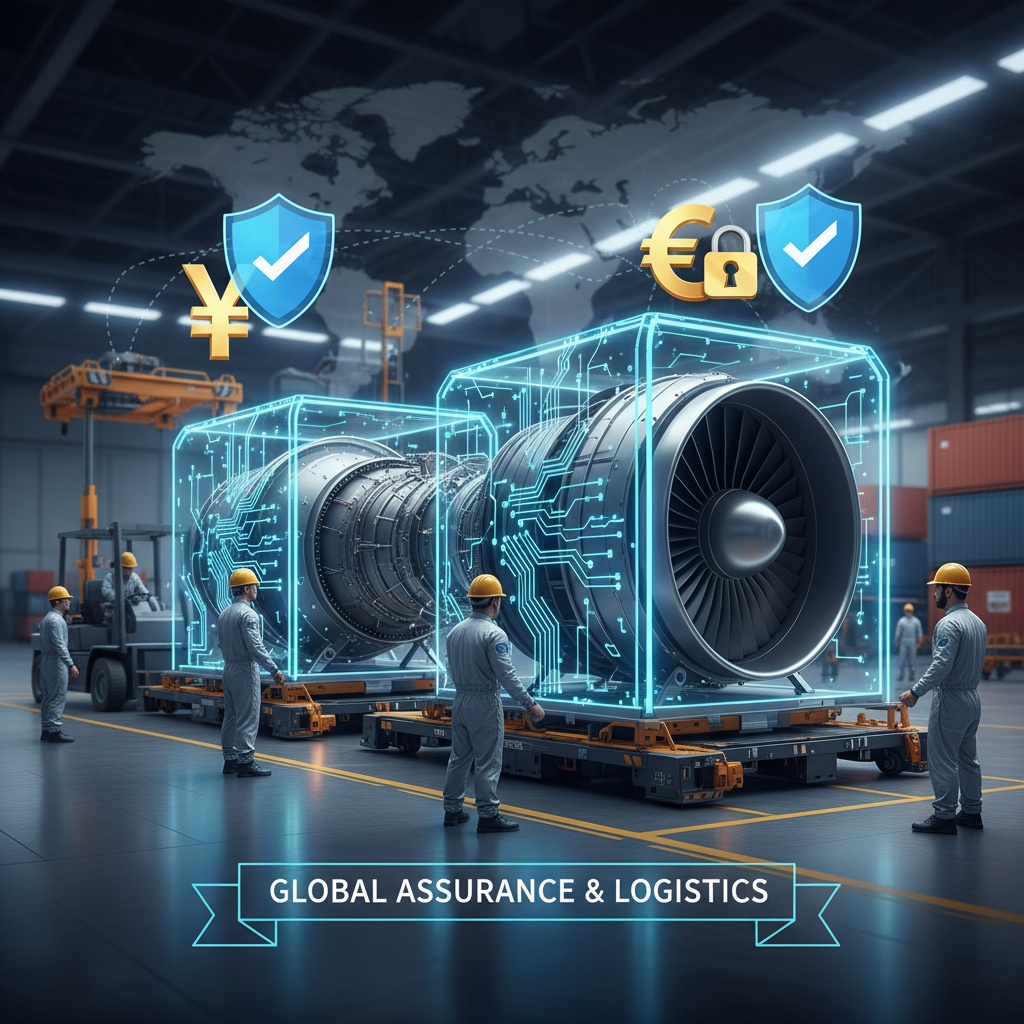Transit and Cargo Insurance for High-Value Aerospace Components: Protecting Precision and Investment
In the intricate world of aerospace manufacturing and logistics, the transportation of high-value components represents a critical junction of risk and precision. A single mishandled component or unforeseen incident can translate into millions of pounds in potential losses. This comprehensive guide explores the nuanced landscape of transit and cargo insurance specifically tailored for high-value aerospace components.

Understanding the Unique Risk Landscape of Aerospace Component Transportation
Aerospace components are not ordinary cargo. Precision-engineered parts for aircraft, satellites, and advanced machinery represent extraordinary value, with individual components potentially costing hundreds of thousands or even millions of pounds. The risk spectrum is equally extraordinary:
- Manufacturing Precision: Components manufactured to microscopic tolerances, where even minimal damage can render a part unusable
- Material Complexity: Advanced composites, titanium alloys, and specialized materials that are extremely expensive and challenging to replace
- Technological Sophistication: Electronic and mechanical components with intricate designs that are sensitive to environmental variations
Primary Risk Categories in Aerospace Component Transit
- Physical Damage Risks
- Mechanical shock and vibration during transportation
- Temperature and humidity fluctuations
- Improper handling and loading/unloading procedures
- Potential collision or transportation vehicle failure
- Environmental Risks
- Extreme temperature variations
- Humidity and condensation
- Electromagnetic interference
- Potential exposure to corrosive environments
- Logistical Risks
- Complex international shipping regulations
- Multiple handling points and transfer locations
- Customs and border control complexities
- Potential for theft or unauthorized access
Comprehensive Transit and Cargo Insurance: Essential Coverage Components
For aerospace manufacturers and logistics providers, a robust transit and cargo insurance policy must extend far beyond standard transportation coverage. Key elements include:
All-Risk Physical Damage Protection
Comprehensive coverage against physical damage, including mechanical shock, improper handling, and environmental exposure. Policies should cover full replacement value and potential consequential losses.
Specialized Valuation Mechanisms
Unique valuation approaches that recognize the extraordinary value of aerospace components, including agreed value provisions and specialized replacement cost calculations.
Global Transportation Coverage
Policies that provide seamless protection across international boundaries, accounting for varied regulatory environments and transportation modes.
Environmental Condition Monitoring
Coverage that includes provisions for environmental monitoring, with potential premium reductions for advanced tracking and condition monitoring technologies.
Risk Mitigation Strategies Beyond Insurance
While comprehensive insurance is crucial, proactive risk mitigation remains paramount. Recommended strategies include:
- Implementing rigorous packaging and transportation protocols
- Utilizing advanced tracking and condition monitoring technologies
- Developing comprehensive logistics and handling standard operating procedures
- Regular staff training on specialized handling requirements
- Maintaining detailed documentation and provenance records
Cost Considerations and Premium Calculation
Premium calculations for high-value aerospace component transit insurance are complex, involving multiple sophisticated factors:
| Factor | Impact on Premium |
|---|---|
| Component Replacement Value | Direct proportional relationship |
| Transportation Mode | Varies significantly (air vs. sea vs. ground) |
| Historical Loss Ratios | Company-specific risk assessment |
| Risk Mitigation Technologies | Potential premium reductions |
| Global Transportation Routes | Complexity and geopolitical risk factors |
Emerging Technologies Transforming Transit Insurance
The intersection of insurance and aerospace logistics is rapidly evolving, with emerging technologies reshaping risk assessment and management:
IoT Condition Monitoring
Real-time sensors providing continuous environmental and handling data, enabling proactive risk management.
Blockchain Documentation
Immutable tracking of component provenance, handling, and transportation conditions.
AI-Driven Risk Prediction
Advanced algorithms analyzing historical data to predict and mitigate potential transportation risks.
Selecting the Right Insurance Partner
When choosing a transit and cargo insurance provider for high-value aerospace components, consider:
- Specialized aerospace industry experience
- Global coverage capabilities
- Flexible and customizable policy structures
- Rapid claims processing expertise
- Technology integration capabilities
- Understanding of complex regulatory environments
Conclusion: Protecting Precision in Motion
Transit and cargo insurance for high-value aerospace components is far more than a financial safeguard—it's a critical risk management strategy. By understanding the unique challenges, implementing comprehensive coverage, and leveraging emerging technologies, aerospace manufacturers and logistics providers can ensure the safe, secure transportation of these extraordinary assets.
Frequently Asked Questions
Q: How often should transit insurance policies be reviewed?
A: Annually, or whenever there are significant changes in component value, transportation routes, or technological capabilities.
Q: Can insurance cover prototype or experimental components?
A: Specialized policies can be crafted for prototype components, though premiums and coverage terms will be more complex.
Q: How do environmental monitoring technologies impact insurance?
A: Advanced monitoring can lead to lower premiums by demonstrating proactive risk management and providing detailed transportation condition data.


 0330 127 2333
0330 127 2333